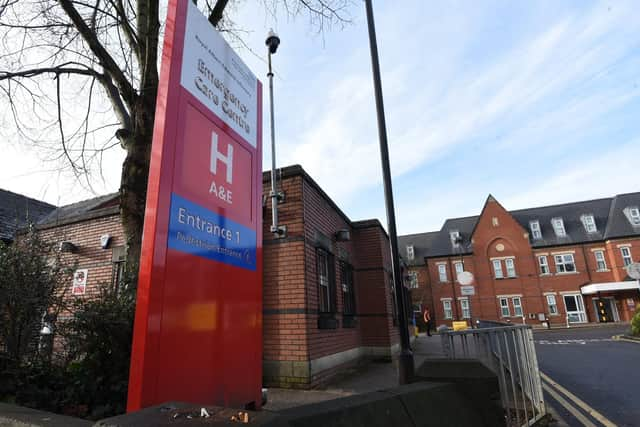Attendances drop at Wigan's A&E unit amid huge demand and strikes
and live on Freeview channel 276
Large numbers of people attending the casualty department and delays in discharging patients on wards caused massive pressure on the borough’s hospitals, with trust chiefs twice declaring a “critical incident” this winter and urging people not to turn up unless they were in a limb or life-threatening condition.
The situation coincided with strike action by nurses and ambulance service staff in disputes over pay and conditions.


Advertisement
Hide AdAdvertisement
Hide AdNew data released by NHS England shows people across Wigan listened to the appeals to get help elsewhere, as attendances at A&E dropped significantly.
There were 7,291 attendances at the unit in January – down 14.74 per cent from 8,551 in December and 4.43 per cent from 7,629 in January 2022. It was the lowest monthly attendance since February 2021, during the pandemic.
For Wrightington, Wigan and Leigh Teaching Hospitals NHS Foundation Trust (WWL) as a whole – which includes Leigh Walk-In Centre – there were 10,919 attendances. That fell by 19.88 per cent from 13,628 in December and 7.25 per cent from 11,772 in January 2022.
Staff saw 48.4 per cent of patients in Wigan’s A&E within the target time of four hours, up from 44.6 per cent in January but far below the national standard of 95 per cent.


Advertisement
Hide AdAdvertisement
Hide AdThis rose to 65 per cent for the trust as a whole – up from 64.2 per cent the month before – as 98.2 per cent of people were seen at the walk-in centre on time.
Across the trust, there were 2,617 emergency admissions, down 5.35 per cent from 2,765 in January.
Once the decision to admit had been made, 1,465 patients had to wait more than four hours for a bed, while 299 waited for more than 12 hours.
That meant 30 fewer people (two per cent) waited for four hours compared to December, but there was a 15.44 per cent rise from the 259 people who waited more than 12 hours that month.
Advertisement
Hide AdAdvertisement
Hide AdWWL’s deputy chief executive Mary Fleming said: “Ongoing winter pressures, and a high number of patients attending our emergency department, has meant that WWL is continuing to face extraordinary pressures on our urgent and emergency care system, just like many NHS organisations up and down the country. Unfortunately, this has led to patients experiencing significantly longer waits.
“The trust is tackling this issue in different ways, such as utilising our same-day emergency care unit to divert patients from A&E to a more appropriate level of care, which includes rapid assessment, diagnosis and treatment without being admitted to a ward, and, if clinically safe to do so, a return home. Our pioneering virtual ward service is also playing a huge part, allowing patients to be monitored and treated within the comfort of their own homes.
“Our clinical and community colleagues are also working together with our primary care partners across the Wigan borough health system to better understand our patient population and their needs. This includes looking at how to better provide care in the community while recognising that primary care systems are also under pressure.”
She said staff were “extremely grateful” for the public’s support and encouraged people to help patients recover at home when possible.
